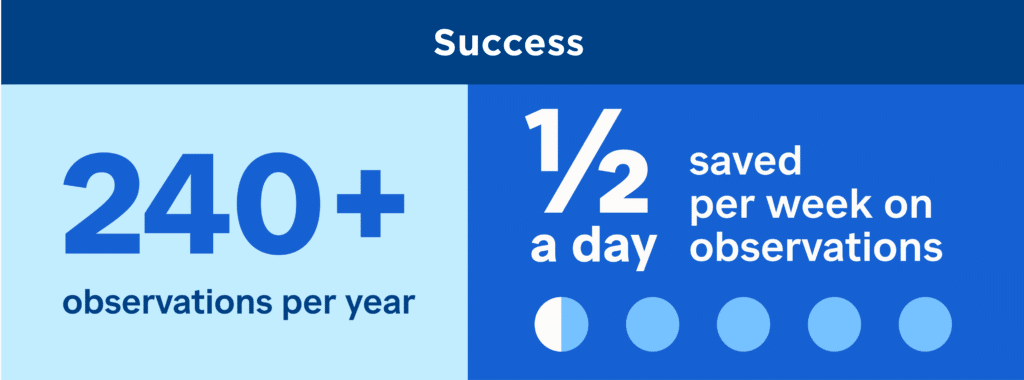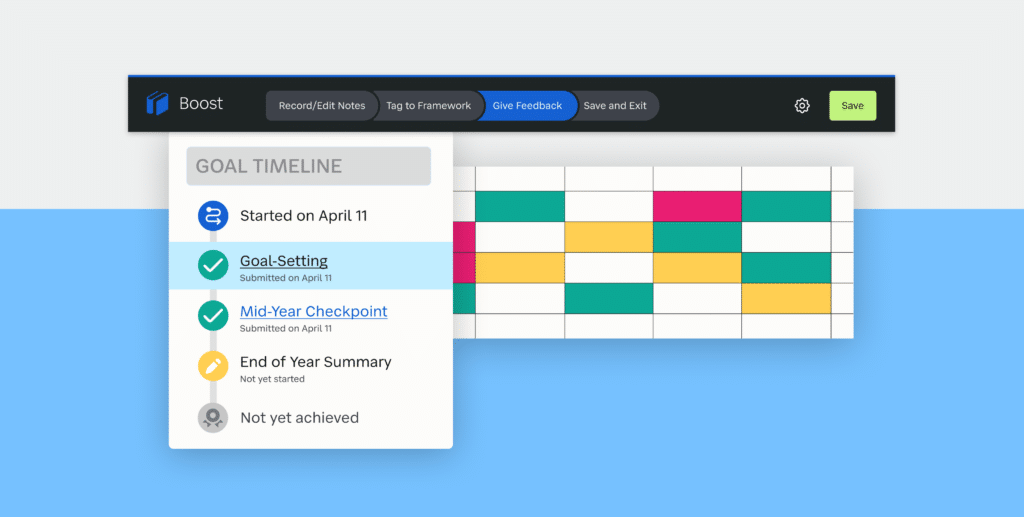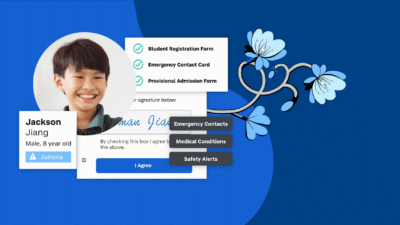
How the A. Philip Randolph Leadership Team Saves Half a Day Per Week
![HERO_[Boost] [Case Study] A. Philip Randolph High School Image of School building with icons framing it](https://www.schoolstatus.com/wp-content/uploads/HERO_Boost-Case-Study-A.-Philip-Randolph-High-School-900x506.png)
The A. Philip Randolph School (APRCHS) focuses on educator observations, evaluations, and coaching to fulfill its mission. The school needed a way to streamline observations for its large staff and use data to inform educator coaching. With SchoolStatus Boost, APRCHS has improved instructional clarity and saved its leadership team half a day per week on observations. SchoolStatus Boost made it easier for APRCHS to meet state requirements and lower the level of effort required to gather and analyze coaching observations for educators. As a result, the school has improved instructional clarity and saved its leadership team half a day per week on observations.
Streamlined Coaching Leads to Better Educational Outcomes
APRCHS, located in Harlem, was founded in 1979 as an educational collaboration between the New York City Department of Education and the City College of New York. The school serves over a thousand students in grades 9-12, with a mission to provide the skills and experiences necessary to prepare its graduates to succeed at competitive colleges and universities.

The Goal:
Upgrade a Slow and Time-Consuming Observation Process to a Streamlined and Efficient One
As one of the larger schools in Manhattan, APRCHS found it unsustainable to use legal pads and Word documents to keep up with multiple observation cycles each year. APRCHS needed a way to streamline their observation process in a way that aligned with the Advance Web Application (AWA) data entry system required by the New York City Department of Education and the Danielson Framework.
In 2013, APRCHS selected SchoolStatus Boost to reduce redundancy and put all of the data into one platform. “We’re an early adopter of [SchoolStatus Boost]. We love it,” shared Principal David Fanning. “It helps to solidify some of the subjective. I can’t imagine doing observations and evaluations without it.”
“We’re an early adopter of [SchoolStatus Boost]. We love it. It helps to solidify some of the subjective. I can’t imagine doing observations and evaluations without it.”
David Fanning, Principal, A. Philip Randolph High School
The Challenge:
Time-Consuming Redundancies Impeded the Observation Process
The APRCHS leadership team is large, with many different people conducting walkthroughs across a week. “We needed to stop all the traffic jams and avoid doing double work related to classroom walkthroughs and year-end evaluations,” shared Fanning. SchoolStatus Boost unifies meetings, evidence, classroom visits, action steps, and notes with a centralized place to track observation cycles. “Now we’re able to stay focused on instructional expectations and excellence.”
APRCHS uses SchoolStatus Boost to monitor goals, next steps, and action plans. “With [SchoolStatus Boost’s] data capabilities, we can view trends across grade-levels more easily and identify areas for improvement,” Fanning shared. “One thing that emerged our first year using [SchoolStatus Boost] was that our teachers were struggling with 3B in the Danielson Framework—using questioning and discussion techniques—so our coaches were able to provide space for teachers to practice and get feedback.”
The Outcomes:
Improved Instructional Clarity and Significant Time-Savings
APRCHS uses SchoolStatus Boost to get aggregated data views at both the individual and school level. The leadership team can further break down data by standard, rating, observer, demographic, and date. Fanning shared, “One of our favorite [SchoolStatus Boost] features is the heatmap. It gives our entire leadership team a broad perspective and allows us to understand if an issue is school-wide, department-wide, or classroom specific.”
APRCHS has added tremendous efficiency to the cadence of the yearly observation and evaluation process, and they’re able to meet the NYCDOE requirements while staying focused on the professional development needs of their educators. “We do all of the observation work on [SchoolStatus Boost] and click one button that automatically copies everything over to the Advance Web Application required by NYCDOE,” Fanning shared.
“We were spending countless hours scripting classroom observations by hand and then moving them into various digital platforms and paper files,” said Fanning. “We figured out we are saving at least half a day a week in observations because of [SchoolStatus Boost]. We will never go back to what we were doing before!”
“We were spending countless hours scripting classroom observations by hand and then moving them into various digital platforms and paper files. We figured out we are saving at least half a day a week in observations because of [SchoolStatus Boost]. We will never go back to what we were doing before!”
David Fanning, Principal, A. Philip Randolph High School

Conclusion
Once burdened by time-consuming observations, A. Philip Randolph High School streamlined its process for holding over 240 observations per year. For nine years, APRCHS has used SchoolStatus Boost to save time with a centralized place to track observation cycles, schedules, evidence, notes, classroom visits, and action steps. With real-time data views that show goals progress at both the individual and school level, SchoolStatus Boost has helped APRCHS enhance educator training and improve instructional excellence.
To learn more about how SchoolStatus Boost can streamline and enhance your observation process, contact our team.


![[Boost] [Case Study] Wahoo Public Schools – featured image Photo of female Asian educator with graphics and text illustrating her observation information](https://www.schoolstatus.com/wp-content/uploads/HERO_Boost-Case-Study-Wahoo-Public-Schools-400x225.png)
